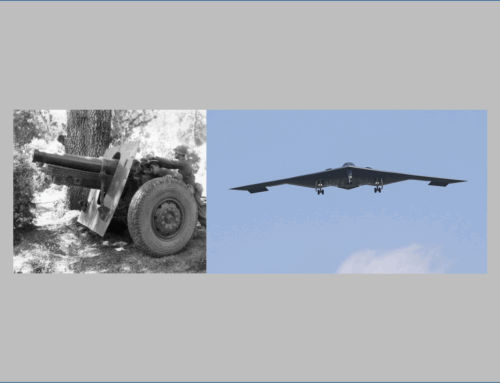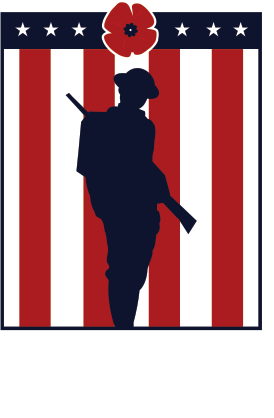Reburial of American WWI ace Captain Hamilton Coolidge in France draws respectful crowd
Published: 15 October 2024
By Eric Mueller
Special to the Doughboy Foundation website

Coolidge Nieuport 28 500
A replica Nieuport 28 fighter, like the one flown in WWI by Captain Hamilton Coolidge, circles as the funeral procession moves to the village cemetery.
September 15, 2024 brought bright sunshine, blue skies, and warm temperatures to Chevières, France as over 400 people gathered for the reburial of an American First World War ace. Captain Hamilton Coolidge was killed in action on Oct. 27, 1918 just a few weeks after his 23rd birthday. A pilot and flight leader with the 94th Pursuit Squadron, the famous “Hat in the Ring Gang”, the newly promoted Coolidge, or “Ham” as he was known, was already an ace on that fateful day, having eight confirmed kills to his credit. Ham’s natural charisma, bravery, flying skills, and cool-headedness in the swirling dogfights above northern France earned him the respect and admiration of the other members of the squadron, particularly his commanding officer Captain Eddie Rickenbacker.
Born on Sept.1, 1895, Ham grew up in a privileged environment, attending the Groton School and gaining admittance to Harvard. He was a top student and a talented athlete. His leadership abilities began to emerge as he was elected president of his class. He was on track for a comfortable, successful life, but across the Atlantic lay adventure. War was raging in Europe and young American men were captivated by the thrilling stories of the pilots of the Lafayette Escadrille. The allure of flying in combat was too much for Ham, so he and his good friend Quentin Roosevelt, the youngest son of President Teddy Roosevelt, decided to drop out of Harvard and pursue their ambition.
After learning to fly and earning his commission, Ham was sent to France to help establish the training bases for the fledgling U.S. Army Air Service at Issoudun. Ham was diligent in his duties, among which was test flying battle-damaged fighters that had been repaired and were being returned to front line service. This gave Ham a great deal of flying experience, but it lacked what had driven him to come to France: a chance to fight in the air. After additional training in combat tactics, Ham was assigned to the 94th Pursuit Squadron. Initially flying Nieuport 28 aircraft, the squadron soon received the superior Spad XIII fighter.
Ham scored his first kill on July 7, 1918 when he and another pilot shot down a German Rumpler observation aircraft. His next aerial victory came on October 2, shooting down a Halberstadt C, but it was on October 3 when he made his mark. On that day, he shot down two enemy aircraft, a Fokker D-VII and an LVG C, and an observation balloon. This brought his total to five, thereby making him as ace. This remarkable two-day performance also gained him a promotion to Captain. Over the next few weeks, he added three more kills to his total, but then came October 27.
On that day, Ham was leading a flight of Spads that were escorting observation and bombing aircraft on a mission to Grandpré, France. As the Spads were flying top cover, Ham saw a group of German Fokker D-VII fighters attacking these vulnerable airplanes. Without hesitation, Ham dove down to protect them. Grandpré lies in the Aire River valley, and the Germans had numerous anti-aircraft guns along the high ground. They threw up a barrage of explosive shells and unfortunately, one of them found its mark. Ham’s Spad took a direct hit beneath the engine, likely killing him instantly, and sending the wooden and fabric fighter down in flames. It crashed next to the Aire River, just north of the village of Chevières. The following day, Capt. Rickenbacker made his way to the area, and with the aid of a 78th Infantry Division officer who had witnessed the crash, they located, as Rickenbacker wrote in his memoirs, “the mangled body of my dear friend Ham.” Together with a regimental chaplain, they buried Capt. Hamilton Coolidge next to wreckage of his Spad.
In the spring of 1919, Graves Registration Service moved Ham’s body to the Meuse Argonne American Cemetery in Romagne-sur-Montfaucon. However, Ham’s parents had other ideas. While visiting France after the war, they decided to purchase a small parcel of land on the site where Ham fell. A memorial was created, and in the summer of 1924, he was disinterred from the large cemetery and returned to the quiet, remote site where he fell. Mr. and Mrs. Coolidge also made an agreement with the village of Chevières to watch over her beloved son and to maintain his gravesite. In exchange, they provided financial assistance for the rebuilding of the village, even going so far as to see that each year, the children had gifts at Christmas. There are stories of children riding around the still war-torn countryside on new bicycles. For over 100 years, this bond between the family and the village has endured.
Recently, however, a shift in the course of the Aire River entered the picture. The original gravesite is at a horseshoe bend in the Aire, and over the years, erosion has caused the bank to move closer and closer. Within the last five years the rate had increased, so it became clear that Ham would have to be moved or he would be lost to the river. Discussions were held, officials were contacted, and the process of moving him was underway. All of this culminated on September 15, 2024.
A week prior to the ceremony, local officials, a funeral director, and a few officers from the 94th Fighter Squadron were on hand as Ham was disinterred for the river bank. His remains were removed and placed in a new coffin. On the morning of Sunday, September 15, he was placed in the village church in Chevières, where a private service was held for the 27 family members who had traveled to France. After the service, current pilots of the 94th carried their fallen comrade to the front of the church where he was eulogized before a gathered crowd of U.S. and French Air Force personnel, the Coolidge family, the citizens of Chevières, and other attendees.
“This is an historic day in our small village”, said Mayor Jean-Charles Genty. “We honor the sacrifice of Capt. Hamilton Coolidge, who has been a part of our commune for over 100 years. It is our privilege to continue watching over him as a demonstration of our enduring gratitude.”
Said Lt. Col. Harrison Garlick, 94th Fighter Squadron Commander, “It is important for us in the 94th Fighter Squadron to understand our roots. Capt. Coolidge died executing the same mission that we do today. We escort strike and bomber aircraft that need our protection to fulfill their mission. That’s what Ham was doing when he dove into heavy anti-aircraft fire to protect the reconnaissance aircraft that were being attacked. His bravery and selfless devotion are what we as modern day fighter pilots strive to achieve.”
Following these tributes, the 94th pilots placed Ham’s coffin on a restored 1918 U.S. Army supply wagon pulled by Utopie, a horse provided by a local farmer. Led by Lt. Col. Garlick, a squadron standard bearer, and a drummer, the procession made its way some 400 meters down the main street of Chevières to the village cemetery where Ham was carried to his new gravesite and lowered into his final resting place. The local children then lined up before the open grave, each placing a white rose, symbolizing their respect and continued devotion to watching over him. Next, members of the 94th, along with other officers and enlisted personnel of the U.S. Air Force and officers from the French Air Force placed small pieces of the wrecked Spad XIII into the grave. USAFE chaplain, Lt. Col. Jason Klodnicki then made some brief remarks before a flight of three F-16 Vipers from the 480th Fighter Squadron based at Spangdahlem, Germany and a lone French Rafael fighter from 2/4 Lafayette Escadrille based at St. Dizier, France flew over in the missing man formation. All attendees were then invited to the village square for champagne and sweets in celebration and remembrance of a fallen American hero.

Mr. John Coolidge, great-nephew of Capt. Hamilton Coolidge. He is accompanied by his wife and daughter
“My family only knew Ham for 22 years.”, said John Coolidge, great-nephew of Capt. Coolidge. “The people here in Chevières have known him for over a century. They know him better than we do. But we all feel like we’re part of one big family. They’re the ones looking after him, and that’s so important to my family. We thank them for that.”

Pilots of the 94th Fighter Squadron bearing the coffin of Captain Hamilton Coolidge as it leaves the village church in Chevières.

Restored U.S. Army supply wagon carrying the body of Capt. Hamilton Coolidge. It is escorted by current pilots of the 94th Fighter Squadron.

Lt. Col. Harrison Garlick presenting the flag to Mr. John Coolidge, great nephew of Captain Hamilton Coolidge.

(Above and below) The children of Chevières placing flowers on the grave of Captain Hamilton Coolidge.
External Web Site Notice: This page contains information directly presented from an external source. The terms and conditions of this page may not be the same as those of this website. Click here to read the full disclaimer notice for external web sites. Thank you.












